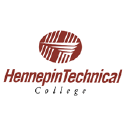What do they do?
Develop programs to control machining or processing of materials by automatic machine tools, equipment, or systems. May also set up, operate, or maintain equipment.
Also known as:
CAD CAM Programmer (Computer-Aided Design Computer-Aided Manufacturing Programmer), Computer Numerical Control Machinist (CNC Machinist), Computer Numerical Control Programmer (CNC Programmer), Programmer
-
4.3%
Change
Ranks #30 in job growth rate240Job Openings
Ranks #4 in net job growth
Looking for colleges that offer a specific major? Use the College Match Tool to find your best-matched schools and discover your estimated Net Price!
- High school diploma equivalent (39%)
- Some college, no degree (29%)
- Associate's degree (14%)
- Less than high school diploma (9%)
- Bachelor's degree (7%)
- Master's degree (1%)
- Doctorate or Professional Degree (<1%)
People in this career often have these skills:
- Programming - Writing computer programs for various purposes.
- Monitoring - Monitoring/Assessing performance of yourself, other individuals, or organizations to make improvements or take corrective action.
- Operations Monitoring - Watching gauges, dials, or other indicators to make sure a machine is working properly.
People in this career often know a lot about:
- Computers and Electronics - Knowledge of circuit boards, processors, chips, electronic equipment, and computer hardware and software, including applications and programming.
- Mechanical - Knowledge of machines and tools, including their designs, uses, repair, and maintenance.
- Mathematics - Knowledge of arithmetic, algebra, geometry, calculus, statistics, and their applications.
- Production and Processing - Knowledge of raw materials, production processes, quality control, costs, and other techniques for maximizing the effective manufacture and distribution of goods.
- Engineering and Technology - Knowledge of the practical application of engineering science and technology. This includes applying principles, techniques, procedures, and equipment to the design and production of various goods and services.
- Design - Knowledge of design techniques, tools, and principles involved in production of precision technical plans, blueprints, drawings, and models.
People in this career often have talent in:
- Information Ordering - The ability to arrange things or actions in a certain order or pattern according to a specific rule or set of rules (e.g., patterns of numbers, letters, words, pictures, mathematical operations).
- Near Vision - The ability to see details at close range (within a few feet of the observer).
- Problem Sensitivity - The ability to tell when something is wrong or is likely to go wrong. It does not involve solving the problem, only recognizing that there is a problem.
- Perceptual Speed - The ability to quickly and accurately compare similarities and differences among sets of letters, numbers, objects, pictures, or patterns. The things to be compared may be presented at the same time or one after the other. This ability also includes comparing a presented object with a remembered object.
- Mathematical Reasoning - The ability to choose the right mathematical methods or formulas to solve a problem.
- Visualization - The ability to imagine how something will look after it is moved around or when its parts are moved or rearranged.
People in this career often do these activities:
- Program equipment to perform production tasks.
- Determine production equipment settings.
- Select production equipment according to product specifications.
- Study blueprints or other instructions to determine equipment setup requirements.
- Conduct test runs of production equipment.
- Create diagrams or blueprints for workpieces or products.
- Enter commands, instructions, or specifications into equipment.
- Calculate dimensions of workpieces, products, or equipment.
- Draw guide lines or markings on materials or workpieces using patterns or other references.
- Plan production or operational procedures or sequences.
- Verify information or specifications.
- Perform basic equipment maintenance.
- Mount materials or workpieces onto production equipment.
- Position patterns on equipment, materials, or workpieces.
This page includes data from:

 Occupation statistics: USDOL U.S. Bureau of Labor Statistics Occupational Employment Statistics
Occupation statistics: USDOL U.S. Bureau of Labor Statistics Occupational Employment Statistics






















